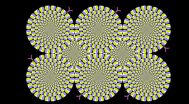(Press-News.org) Abusive men put female partners at greater sexual risk, study finds
Abusive and controlling men are more likely to put their female partners at sexual risk, and the level of that risk escalates along with the abusive behavior, a UW study found.
Published in the Journal of Sex Research in July, the study looked at patterns of risky sexual behavior among heterosexual men aged 18 to 25, including some who self-reported using abusive and/or controlling behaviors in their relationships and others who didn't.
The research found that men who were physically and sexually abusive to women were more likely than non-abusive men to engage in behaviors that exposed them and their partners to sexually transmitted infections, such as avoiding condoms and not being monogamous.
Conversely, men who were not physically or sexually abusive, but who used controlling behavior such as dictating who their partners could see or what they wore, were no more likely to engage in risky sexual behaviors than men who were not controlling.
The researchers conducted the study to better understand the link between heterosexual relationship violence, which affects women disproportionately, and sexual risk, since heterosexual sex remains the primary means of HIV transmission to women.
Prior research has focused on the link between relationship violence and sexual risk among women, but relatively little is known about the specific sexual behaviors of the men in those relationships, lead author Erin Casey said.
"There's surprisingly little research about heterosexual men in the sexual health field," said Casey, an associate professor of social work at the University of Washington Tacoma. "The research tends to focus on women and men who have sex with men. I think we make a lot of assumptions about what heterosexual men believe and do."
Co-author Katherine Querna, a Ph.D. student at the UW School of Social Work in Seattle, said the researchers wanted to parse out individual sexual and abusive behaviors to provide a more nuanced picture of how specific types of abuse may influence sexual risks. For example, she said, researchers expected to find that men who reported using controlling behavior only would exhibit an elevated level of sexually risky behavior, but that wasn't the case.
"Sexuality is a venue through which people who use abuse can control their partners, so isolating out those behaviors might help us to understand that," she said.
To recruit for the study, researchers placed ads on Facebook and Craigslist showing racially and ethnically diverse heterosexual couples, and invited men aged 18 to 25 across the U.S. to share their views on "a web survey about relationships with women."
The study's 300-plus respondents, who were paid $40 each for participating, were asked whether they used abusive or controlling behaviors in their relationships, and about their sexual behaviors -- for example, their number of intimate partners and whether they paid for sexual services.
The study uncovered "disturbingly high" rates of abusive and controlling behaviors. About 37 percent of participants reported using physically aggressive behavior toward their partners, and almost 29 percent said they'd used sexual coercion in their relationships. A majority -- 55 percent -- acknowledged using controlling behaviors, either alone or in combination with other abusive behaviors.
The finding suggests that such behavior might not be uncommon among young men, Casey said.
"We need to understand more about the degree to which controlling behaviors are normative or accepted in this age group," she said.
Overall, Casey said, the findings highlight the need to consider a broad range of sexual behaviors in domestic violence and sexual risk prevention programs, and to improve sexual risk screening and education in treatment programs for domestic violence perpetrators and victim services alike.
"This reinforces the idea that when we try to assess for sexual risk, we have to look at a lot of different sexual behaviors and motivators," she said. "If we just look at condom use or monogamy, we might miss the boat and may not understand someone's exposure to sexual risk."
INFORMATION:
Other co-authors, all from UW social work, are research scientists Tatiana Masters, Blair Beadnell and Marilyn Hoppe; research professor Elizabeth Wells; and professor Diane Morrison.
For more information, contact Casey at 253-692-4524 or ercasey@uw.edu and Querna at kquerna@uw.edu or 646-285-8146.
The study is available at: http://www.tandfonline.com/doi/full/10.1080/00224499.2014.1002125#.VcORNPlVhBd
A critical immune organ called the thymus shrinks rapidly with age, putting older individuals at greater risk for life-threatening infections. A study published August 6 in Cell Reports reveals that thymus atrophy may stem from a decline in its ability to protect against DNA damage from free radicals. The damage accelerates metabolic dysfunction in the organ, progressively reducing its production of pathogen-fighting T cells.
The findings suggest that common dietary antioxidants may slow thymus atrophy and could represent a promising treatment strategy for protecting ...
CINCINNATI - Researchers have developed a new technology that precisely marks where groups of regulatory proteins called transcription factors bind DNA in the nuclei of live cells.
Reporting their data Aug. 6 in the journal Molecular Cell, scientists at Cincinnati Children's Hospital Medical Center say the new technology - called SpDamID - could allow scientists to answer basic questions about tissue development and disease that existing technology cannot address.
"With further development this technology has the potential to give investigators glimpses into biological ...
AUSTIN, Texas -- Men's and women's ideas of the perfect mate differ significantly due to evolutionary pressures, according to a cross-cultural study on multiple mate preferences by psychologists at The University of Texas at Austin.
The study of 4,764 men and 5,389 women in 33 countries and 37 cultures showed that sex differences in mate preferences are much larger than previously appreciated and stable across cultures.
"Many want to believe that women and men are identical in their underlying psychology, but the genders differ strikingly in their evolved mate preferences ...
Understanding how and why we evolved such large brains is one of the most puzzling issues in the study of human evolution. It is widely accepted that brain size increase is partly linked to changes in diet over the last 3 million years, and increases in meat consumption and the development of cooking have received particular attention from the scientific community. In a new study published in The Quarterly Review of Biology, http://www.jstor.org/stable/10.1086/682587, Dr. Karen Hardy and her team bring together archaeological, anthropological, genetic, physiological and ...
Researchers at the Babraham Institute and University of Massachusetts Medical School in the United States have developed a new model to study motor neuron degeneration and have used this to identify three genes involved in the neurodegeneration process. These findings could have relevance for understanding the progression of amyotrophic lateral sclerosis (ALS) and other forms of motor neuron disease (MND). ALS is the most common form of adult-onset motor neuron disease and kills over 1,200 people a year in the UK.
The researchers developed a new model to study neurodegeneration ...
Greenhouse gasses (GHG) emission savings due to final renewable energy consumption in electricity, cooling/heating and transport sectors rose at a compound annual growth rate of 8.8% from 2009 to 2012, confirming the renewables' great potential in climate change mitigation, according to a new JRC report. Nearly two thirds of the total savings came thanks to renewable energy development in Germany, Sweden, France, Italy and Spain.
The report assesses data on the use of renewable energy, submitted by EU Member States every two years, as required by EU legislation on renewable ...
TORONTO -- Despite the growing use of online support groups such as those on Facebook to help curb substance abuse, attending traditional face-to-face meetings may continue to be more effective for people trying to maintain sobriety, according to research presented at the American Psychological Association's 123rd Annual Convention.
"One of the most hotly debated media issues today is whether our rapidly increasing use of social networking might be supplanting face-to-face-interactions and, if so, what the social consequences might prove for us as a culture," said Donald ...
JAMA Oncology will publish two studies, a commentary and an author audio interview examining outcomes in women with breast cancer who had breast-conserving surgery and were treated with hypofractionated radiation therapy (shorter courses of radiation treatment administered in larger daily fraction sizes) compared with longer courses of conventionally fractionated radiation therapy.
In the first article, Benjamin D. Smith, M.D., of the University of Texas MD Anderson Cancer Center, Houston1, and coauthors conducted a randomized clinical trial of 287 women to assess the ...
In an analysis that included a representative sample of the South Korean population, a lower blood manganese level and higher blood mercury level were associated with greater odds of a glaucoma diagnosis, according to a study published online by JAMA Ophthalmology.
Glaucoma is the leading cause of irreversible blindness worldwide and a growing public health concern because of an aging global population. Abnormal body levels of essential elements and exposure to toxic trace metals have been postulated to contribute to the pathogenesis of diseases affecting many organ ...
WASHINGTON, Aug. 6, 2015 -- Optical illusions are deceptive and mind-boggling. What's going on inside our heads when we see things that appear to be moving but aren't, and when we view other, similar visual tricks? In this collaboration between the American Chemical Society and Inside Science TV, we explain how optical illusions work, so you can understand the science behind the trickery. Check it out here: https://www.youtube.com/watch?v=VYIr40D7wNw.
Inside Science TV is a production of the American Institute of Physics. See more videos in the series on the ISTV YouTube ...

